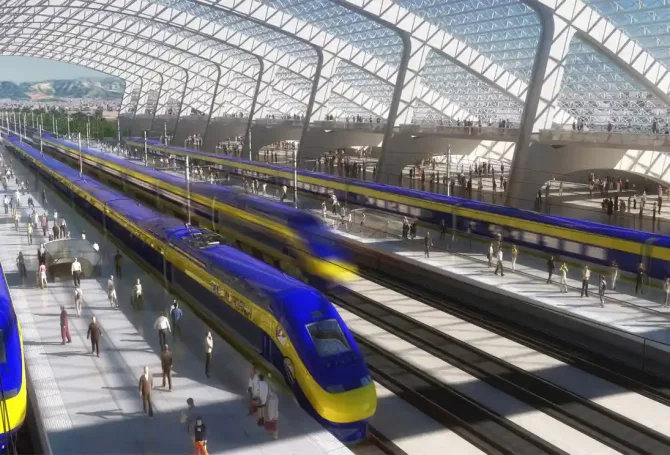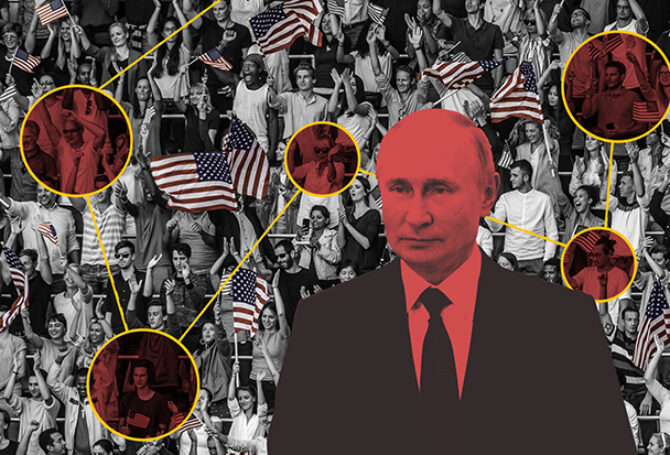
California Project Has Gone from Dream to Nightmare
High-speed trains that zip up to 200 mph dot Europe, but there is only one fast train in the United States, and it can only reach 150 mph. The bullet train envisioned in California between Los Angeles and San Francisco has gone from dream to nightmare since voters approved financing for it in 2008 and the original completion date in 2020 has come and gone.
Interest in high-speed rail has risen since new federal infrastructure legislation will invest $66 billion in passenger rail, and $10 billion of that for high-speed rail projects.
Anyone who has traveled in Europe appreciates the convenience and comfort of the network of 15 different high-speed train options that stretch from Great Britain to Spain or Italy. High-speed trains serve the heart of Europe and plans call for expansion as far east as Istanbul and north into Scandinavia. When you consider check-in, waiting times in airport terminals and taxi rides to city centers, it can be as convenient to take a high-speed train from London to Glasgow or London to the Mediterranean. And you can walk to a dining car for food and refreshments along the way.
There is Amtrak’s flagship Acela high-speed train that connects Washington, DC and New York City in around 2 hours and 45 minutes. It takes six hours and 36 minutes to go from Washington, DC to Boston. There are stops in Baltimore, Wilmington, Philadelphia, Newark, New Haven and Providence. The route is a popular alternative to airline shuttles that offers wider seats, conference tables and more space for carry-ons. Trains emit less CO2 than airplanes, Amtrak notes.
Unlike the compactness of Europe, the United States is sprawling. There are relatively few corridors that could support the cost of building and sustaining operation of high-speed rail. Los Angeles to San Francisco is one of those corridors. California voters agreed in 2008 when they approved $9 billion in state bonding to build it. A privately financed $20 billion project is under consideration to connect Dallas and Houston. Another private firm is exploring high-speed rail between Los Angeles and Las Vegas.
As described by an article in The New York Times, California’s dream project estimated to cost $33 billion and be completed by 2020 has morphed into a project now estimated to exceed $113 billion with a starter leg that is under construction and projected to be finished by 2030 that runs roughly from the Mojave Desert to Fresno. The 2030 date is questionable at the project’s current $1.8 million per day spend rate. It would take longer and likely more money to reach the two original destinations – LA and San Francisco.
High-speed rail also has been a quest in the Pacific Northwest in the Cascadia Corridor connecting Portland, Seattle and far as Vancouver, BC. A 2018 study analyzed various routes and stops with a build-out cost of $42 billion in 2017 dollars. It projected ridership of between 1.6 to 2.5 million as early as 2035. Backers tout the emission-cutting potential of the project, pointing to estimates that the route could replace around 20 percent of vehicle trips by car and airplane.
The future of high-speed rail in California is in doubt as Governor Gavin Newsom and lawmakers have expressed doubt at securing enough additional funding to complete the LA-San Francisco leg of the project, let alone the extension to San Diego in the south and Sacramento to the north.
The delays are less a function of the train than the politicians who gerrymandered the route, starting with a jag to the Mojave Desert that adds 41 miles to the route and will require 38 miles of tunnels and 16 miles of elevated structures to serve relatively few riders. And then there was the questionable decision to start the project in the middle rather than connecting with either Los Angeles and San Francisco and their millions of potential passengers. One California government official said with pointed understatement that the final route “was not based on technical and financial criteria.”
The project may have been undermined from the start by converting it from a bullet train to a mule train, with multiple stops in the state’s Central Valley. It would have been faster and cheaper to follow I-5 along the relatively uninhabited west side of Central Valley.
It’s unknown whether an influx of federal investment can jumpstart the bullet train movement in America. Meanwhile, the expansion of high-speed train routes in Europe continues. The map of existing commercial lines, including some that go faster than 250 mph, and lines under construction resembles a subway legend. Some lines are projected to go as far as Central Asia, eastern Turkey and Marrakesh in Morocco.
Americans who travel in Europe can see first-hand the convenience and comfort of train travel at speeds that can exced 250 mph.





